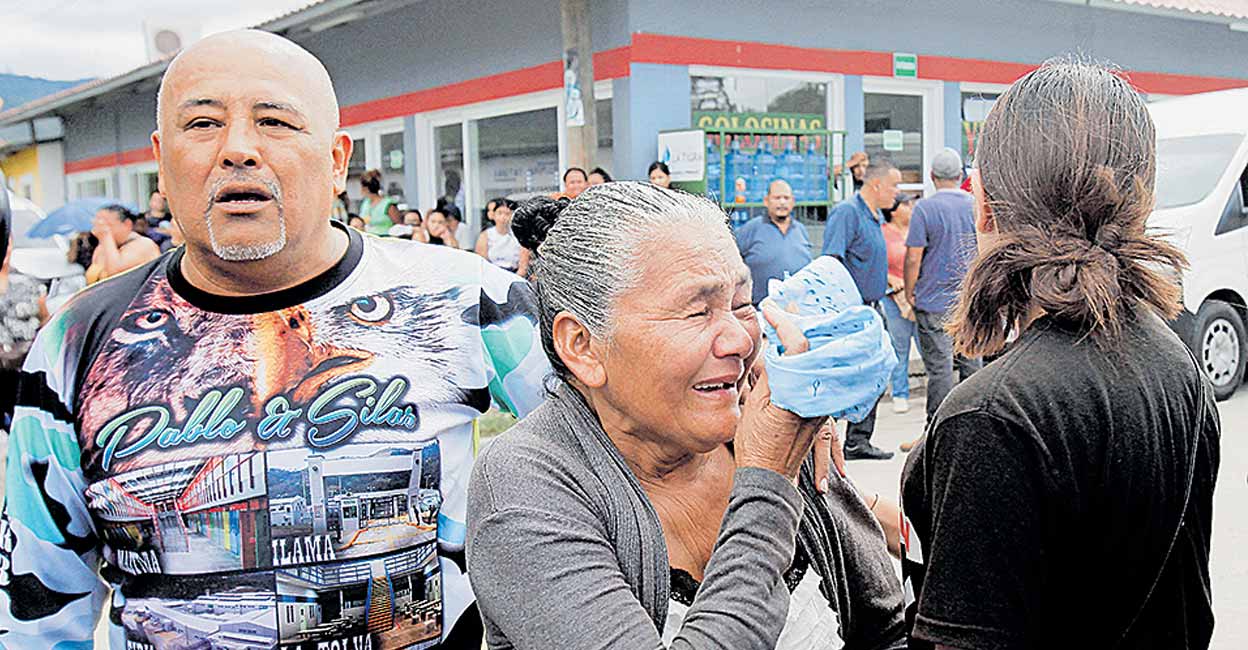Can a place designed for confinement and punishment truly offer safety, even during the most intimate of moments? The recent tragedies at California prisons, where lives have been tragically cut short during family visits, demand immediate and thorough scrutiny.
The family of Stephanie Diane Dowells, a 62-year-old woman who was strangled during an overnight visit with her husband at Mule Creek State Prison last year, spoke on Wednesday, advocating for the suspension of such visits until officials can definitively guarantee the safety of all involved. The gravity of these incidents has intensified with the death of another woman, marking a second deadly tragedy in less than a year at a California prison. These events spotlight a deeply concerning issue that has garnered significant attention in recent years: the inherent risks associated with family visits within correctional facilities.
The emotional and social implications of these tragedies are profound, extending far beyond the immediate loss of life. They cast a long shadow, affecting families, communities, and the very fabric of the prison system itself. The question of how such events can occur, and what can be done to prevent them, is a complex one that demands a multifaceted approach.
- Fascinating Insights On Michael Caine And His Notable Roles
- Is Kevin Costner On The Brink Of Exiting Yellowstone
Stephanie Diane Dowells' visit to Mule Creek State Prison in November 2024 was intended to be a moment of connection with her husband, David Brinson, 54. Tragically, it ended in a nightmare, a stark reminder of the vulnerability that can exist even within the confines of a correctional facility. The details surrounding her death, like the events that led to a similar tragedy at California's Ione prison, remain under investigation, but the shared outcome the loss of life during what should have been a time of intimacy underscores the urgent need for systemic reform.
| Attribute | Details |
|---|---|
| Full Name | Stephanie Diane Dowells |
| Age at Death | 62 years old |
| Incident | Strangled during an overnight visit with her husband at Mule Creek State Prison |
| Location of Incident | Mule Creek State Prison, California |
| Date of Incident | November 2024 (approximate) |
| Relationship to Inmate | Wife of David Brinson |
| Husband's Name | David Brinson |
| Husband's Age | 54 years old |
| Official Investigation | Ongoing |
| Family's Stance | Advocating for suspension of overnight visits |
| Additional Details | Second deadly tragedy at a California prison in less than a year. |
A conjugal visit, also known as a family visit, is designed to provide inmates with a private meeting with a visitor, often their spouse or partner, for extended periods. These visits typically take place within the prison grounds, in facilities equipped with a bed and often a kitchen, offering a semblance of normalcy and connection. However, these environments, while intended to foster intimacy, can also present significant security challenges.
The fundamental question at the heart of this crisis is: how can prisons, designed to restrict freedom and enforce discipline, also ensure the safety of those who enter to share moments of intimacy? The answer is not simple, but it necessitates a comprehensive examination of security protocols, staffing levels, and the overall environment of these facilities. The California Department of Corrections has, in response to the recent tragedies, suspended all prison visits indefinitely, a measure that underscores the seriousness of the situation.
The incidents at Mule Creek State Prison and Ione prison are not isolated events. They are part of a broader pattern of concerning incidents within correctional facilities across the country. While the exact circumstances of each case may differ, the underlying issue remains the same: the inherent risk of violence and the potential for security breaches within a system designed to confine and control.
The son of David Brinson, in a poignant reflection, spoke of his father's humor and the different persona he presented outside of his criminal record. This highlights the complex humanity of those involved, both inmates and visitors, and the devastating impact of these tragedies on families. He said, "\u201cthe past is the past,\u201d".
The emotional and psychological impact on the victim's loved ones cannot be overstated, and it is vital to provide them with the necessary support and resources. The pain of loss is compounded by the circumstances of these deaths, and the families deserve answers, accountability, and assurance that such tragedies will not be repeated. It is the responsibility of correctional officials to address these concerns and implement necessary reforms.
The recent tragedies, in particular, underscore the need for heightened scrutiny of prison safety protocols. This includes: Thorough background checks of all visitors; Enhanced surveillance measures, including improved camera systems and increased monitoring; Comprehensive training for correctional officers in de-escalation techniques and crisis management; Regular review and updating of security protocols to address emerging threats; Adequate staffing levels to ensure effective supervision and response capabilities. The implementation of these measures is not simply a matter of policy; it is a matter of ensuring the safety and well-being of all individuals within the prison system. It's a matter of humanity.
Beyond immediate security concerns, there is a broader discussion to be had about the purpose and nature of family visits within the context of incarceration. While such visits can be a valuable tool for maintaining family connections and supporting rehabilitation, their inherent risks must be carefully weighed against their benefits. Alternatives, such as increased video conferencing and enhanced communication programs, could provide alternative ways to foster connection without exposing visitors and inmates to undue risk.
The state corrections department's decision to suspend all prison visits indefinitely is a necessary, though temporary, measure. The implementation of new measures by Commissioner Daniel Martuscello demonstrates a commitment to addressing the situation. This pause offers an opportunity for a comprehensive review of existing protocols and the development of more robust security measures. It is imperative that this time is used effectively to prevent future tragedies.
The incident in central Mannheim, Germany, where a motorist drove into a crowd, resulting in at least one death, serves as a reminder that violence and tragedy can strike anywhere, at any time. This devastating incident underscores the need for constant vigilance and a commitment to public safety, even during times of celebration.
The death of a man in an upstate New York prison following an altercation with correction officers is a further reminder of the dangers inherent in the environment of imprisonment, demonstrating that, despite the location, safety cannot be taken for granted. The investigation by the New York State Police highlights the need for accountability and transparency in all instances of inmate deaths.
The recent events in California, along with other incidents across the country, demand that we re-evaluate our approach to prison safety. The goal should be to create environments where inmates can maintain ties to their families without putting those families at risk. This requires a commitment to transparency, accountability, and a willingness to implement meaningful reforms. The past is the past, but the future requires a safer, more secure, and more humane approach to incarceration.
The issues are multi-faceted and demand a response that looks at the root causes and systemic failures that allow such tragedies to occur. The incident underscores the urgent need for a comprehensive review of prison safety protocols, security measures, and the welfare of inmates and visitors, ensuring that the focus remains on prevention and protection. While these incidents remain under investigation, one thing is clear: the safety of visitors and inmates during prison visits is paramount.
For further reading and reliable information, you can consult the following websites:
California Department of Corrections and Rehabilitation (CDCR) - The official website of the California Department of Corrections and Rehabilitation, providing information about California prisons, inmate information, policies, and news.



Detail Author:
- Name : Liliana Lynch
- Username : kailee.abbott
- Email : lindsay18@ebert.com
- Birthdate : 1980-10-20
- Address : 620 Lura Ferry Bethanyland, FL 24903-2986
- Phone : 1-480-975-0297
- Company : Jacobson-Kuvalis
- Job : Boiler Operator
- Bio : Rerum eum assumenda quia aliquid numquam. Veritatis laborum dolorum sit minus. Dolor corporis est laudantium consequatur.
Socials
tiktok:
- url : https://tiktok.com/@oswaldo_dickens
- username : oswaldo_dickens
- bio : Consequatur repellendus et architecto omnis alias.
- followers : 3930
- following : 1679
linkedin:
- url : https://linkedin.com/in/oswaldo.dickens
- username : oswaldo.dickens
- bio : Nam libero sunt perferendis vitae commodi ut.
- followers : 3892
- following : 824